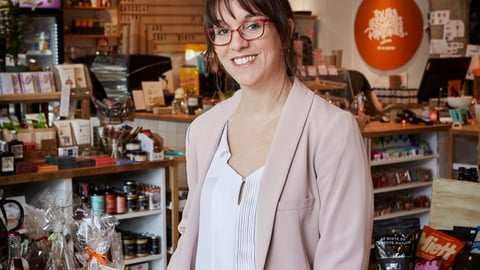Convenience U CARWACS Show opens in Toronto
Attendees at this year’s Convenience U CARWACS Show in Toronto were given some insights as to how price consideration and inflation is changing c-store shopping, but also how they can overcome those challenges by building customer loyalty and focusing on their needs.
Beth Brickel, vice-president, research with EnsembleIQ, took those attending the first morning breakfast sessions of the conference, the most recent C-store IQ National Study 2024. This was the fourth-annual study looking at the shopping behaviour of some 2,000 Canadian c-store customer across Canada.
This year’s study found some interesting changes amongst Canadian shoppers, coming off of the pandemic that brought profound changes in consumer shopping behaviours and ongoing economic concerns amongst Canadians.
Brickel says that half of the surveyed shoppers went to a Canadian c-store at least once a week or more, there was a drop in the numbers going to both chain and independent operations and drop in the number of people saying they were making daily trips to their local c-store, from 12% to 9%.
“That drop is driven mostly by people today looking to save money and keeping an eye on their budgets,” she adds. This is behind the shift as to when people go to their local c-store. She says most will go to a c-store between 4 p.m. and 7 p.m. to pick something up, that time when people are finishing work and going home with fewer going between 11 a.m. and 2 p.m. that saw a drop to 22% from 25% the previous year. That 11 a.m.-2 p.m. time slot was likely when people were quickly visiting to grab something for lunch or to add to their lunch.
As well, 75% of shoppers say they spend less than 5 minutes in a c-store, with only 32% saying they spend between 5-15 minutes in a c-store, and gen-z, that fast growing and important demographic for c-stores in Canada, only 1-in-4 are dropping into a c-store after 10 p.m.
So how are c-stores going to get people to come in and buy something when people are holding onto their wallets a little bit more tightly now?
Brickel says that c-stores need to give more consideration too is look at not only leveraging their existing loyalty programs to keep customers coming back, but to use mobile apps to reach younger customers who use their mobile devices heavily to communicate and research topics, goods, and services. She suggests that c-stores also work harder to get younger customers to sign onto loyalty programs. They seem reluctant to do so, so c-store operators need to look at sweetening their use, by adding such things to them as cash-back rewards or gas discounts, two items that are growing in importance to customers.
One market segment Brickel touched up was prepared foods. While talked about for the last couple of years, shoppers seemed to have cooled a bit on them, with fewer shoppers coming into c-stores to buy them, 49% saying they do so from last year’s 65%. Again, she says this is likely being driven by consumers looking to save money.
“This likely also explains the growth in the grab-and-go segment, which saw resiliency in today’s market as grab-and-go items tend to be cheaper and more tempting for those who shop later in the day,” she adds.
Daniel Tsai, Cornell law professor and an operator of a c-store and gas bar in British Columbia spoke about how he took over a struggling c-store and gas bar and made it not only profitable but a destination.
He focused on the need of operator to first focus on examining “your strengths, weaknesses, and opportunities. We were lucky that we were located on a busy highway, but there was lots of competition.”
READ: C-store IQ National Shopper Study
As well, c-store and gas bar operators also need to think carefully about what they are offering. He points out that everyone sells chips and chocolate bars and soft drinks. Offering just those, or putting an emphasis on them, hardly helps one stand out against the competition. He says that one should not be afraid to take risks, to find ways suppliers who are willing to work with you to bring in new goods and products.
“Large chains are only focused on incremental improvements and not the rapid change we wanted to do,” he says.
With his c-store and gas bar, he decided to use the empty service bays to expand the c-store operation, focusing on collaborating with local suppliers and food producers, and now showcases fresh, farm-grown produce and goods, artisanal food and bread, even locally supplied meats and fish. He has also worked with and now sells a range of beauty and health products produced by local businesses that have proven to be hot sellers, making his operation not just a place to buy gas, but a shopping destination.
Tsai also took time to tell attendees to look at how they use social media. He says that involves more than using Facebook or social media to send out notices about sales and offerings. He says operators need to use social media to proactively build customer relationships and loyalty, to communicate how you are there to meet their needs and desires.
So, it is important to emphasize that your operations had fresh products, freshly produced sandwiches and foods, that one works with local businesses and producers and not just on price or worry about your margins, he says.
“I don’t care about high margins. I would sacrifice high margins to improve customer loyalty as loyalty will drive profit,” he adds.
-More coverage to come.




